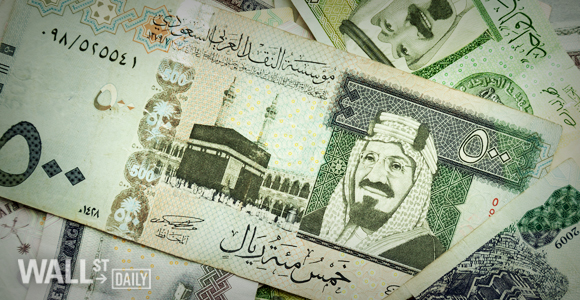
Saudi Arabia is in the midst of two wars.
The first is a very real shooting war in neighboring Yemen. While the second is the oil share war it’s waging against other oil producers, including the United States.
Both of these wars are taking their toll on the Saudis.
You see, oil accounts for 80% of government revenue and 45% of its gross domestic product (GDP).
The International Monetary Fund estimated that the breakeven price of crude oil for the Saudis’ budget in 2014 was $106 per barrel.
But those days of $100-plus oil are gone. And with oil prices dropping by more than half since those highs, Saudi Arabia’s government income is drying up.
Growth in its $745 billion economy is expected to slow this year to 2.8%, down from 3.5% last year.
And to make matters worse, the S&P just cut its credit rating on the country from AA-to A+.
Saudis’ Budget Hole
Somehow, the Saudis are keeping up domestic spending to keep the population happy. The monarchy has spent its way through Arab Spring to quell any unrest and continues to spend heavily.
Energy subsidies alone, at about $3,400 per person this year, will cost the Saudis $106 billion in 2015.
This combination of continued spending and lower revenues has blown a $130 billion hole in the government’s budget this year. Looking at it another way, the fiscal deficit will be about 20% of GDP.
The Saudis have plugged part of that hole by selling about $27 billion worth of government bonds domestically this year.
They’ve also begun bringing overseas assets home. It’s estimated that the Saudis’ sovereign wealth fund pulled $70 billion from overseas money managers in the past six months or so.
But it’s just not enough. The Saudis have been forced to start burning through their large foreign exchange reserves. And they have the world’s third-largest pile, behind China and Japan.
Only last August, these reserves stood at $737 billion. Now they’re down to about $662 billion as of the end of August.









Leave A Comment